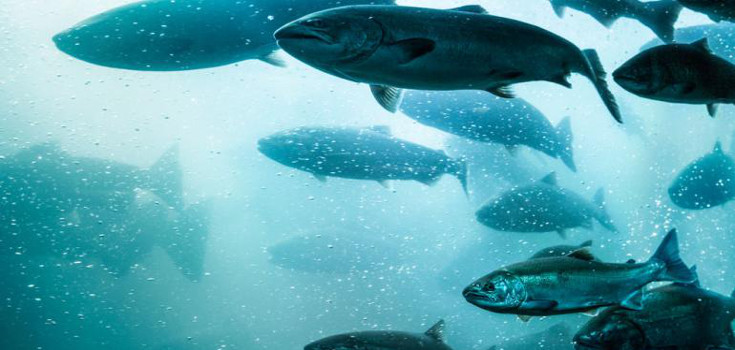Authorities Reverse GMO Fish-Food Approval over Environmental Concerns

With the mass production of genetically modified soy, Monsanto and Cargill produced some big plans for feeding the fish of the sea. But the Norwegian Biotechnology Advisory Board, and the Norwegian Food Safety Authority decided not to participate in these plans – as it could lead to an environmental disaster.
Due to environmental and health concerns revolving around fish given GMO feed that code for antibiotic resistance, Norwegian authorities have stopped approving GM feed for fish. This applies to 8 of the 19 GMO feed varieties that the biotech industry currently pushes on fish farms.
Food & Water Watch reported:
“The American soy industry is powerful. It has been able to fund many studies on using soy for fish feed; it has built relationships in the aquaculture industry; and it has publicly supported federal policies in favor of offshore aquaculture.
… Soy does not have the full array of nutrients demanded by fish, however; nor is it a natural fish food or substance in the marine environment. In fact, using soy may cause some fish farms to pollute more by producing extra waste. Further, the negative ramifications of the soy industry on the environment and potentially on our health are reasons to resist the allure of soy as a “savior” of the aquaculture industry.
The cultivation of soy is associated with agricultural runoff that is contributing to the dead zones in the Gulf of Mexico, with deforestation in Latin America and with the displacement of many indigenous peoples from their homes and work.
As soy becomes increasingly ubiquitous in our diets — in processed foods and the meat from animals that have been raised on it — we must ask what health impacts this high level of soy consumption may have on us. Scientists are beginning to question claims about the benefits of eating soy and to suggest that the plant-based estrogens that occur naturally in soy, many of which are endocrine disruptors, could potentially have adverse impacts.
In light of these concerns and unanswered questions, it is troubling to know that much of our fish — one of our last wild foods — could be fattened on this crop.”
About half of the world’s fish comes from aquaculture, or industrial fish farming. The practice has had problems such as overcrowding of tanks or growth sites, pollution, and contaminating the ocean with more GMOs.
Only recently have people needed to be concerned about GM-fed fish. There are extremely sustainable and of course, non-GMO methods, of growing fish as a food source, though. According to the World Resources Institute, “New research shows that aquaculture production will need to more than double again between now and 2050 to meet the demands of a growing population.”
Related: Major Grocery Stores Refuse GMO Salmon
Even wild fish are being threatened by unsustainable fishing practices, with estimates that our oceans could be fished out by 2050. As Ted Barber has explained in an edifying Ted Talk, “. . .it takes fifteen pounds of wild fish to get you one pound of farm tuna. Not very sustainable. It doesn’t taste very good either.” But one man has completely reversed ecological damage (without using GMOs I might add) by building a 27,000-acre, completely sustainable fish farm in the Argentinean wetlands. It doesn’t rely on a single Big Ag method of farming.
The Norwegian fish industry authorities had given permission to biotech to use GM soy and other contaminates in fish feed since 2008, but new research helped them change their minds:
“The fear is that genes in the GM feed that code for antibiotic resistance may be taken up by various bacteria in the soil in the country where the GMO is produced, in the feed production chain, or in the gut of the fish. Scientists know little about to what extent, or if, this happens with genes that are inserted via genetic modification, but few would deny that it could happen. If the genes first have entered into a bacterium [during the genetic engineering process], they may quickly spread further.”
Norwegian authorities have repeatedly expressed concern over antibiotic-resistant infections, which are rendering antibiotics completely useless. Considering the new evidence pointing to the fact that human and animal guts take up the antibiotic resistance genes from GMOs, this is no small feat toward defeating the biotech machine.
A translation of the Norwegian press article on the antibiotic marker genes in fish feed is available here.
